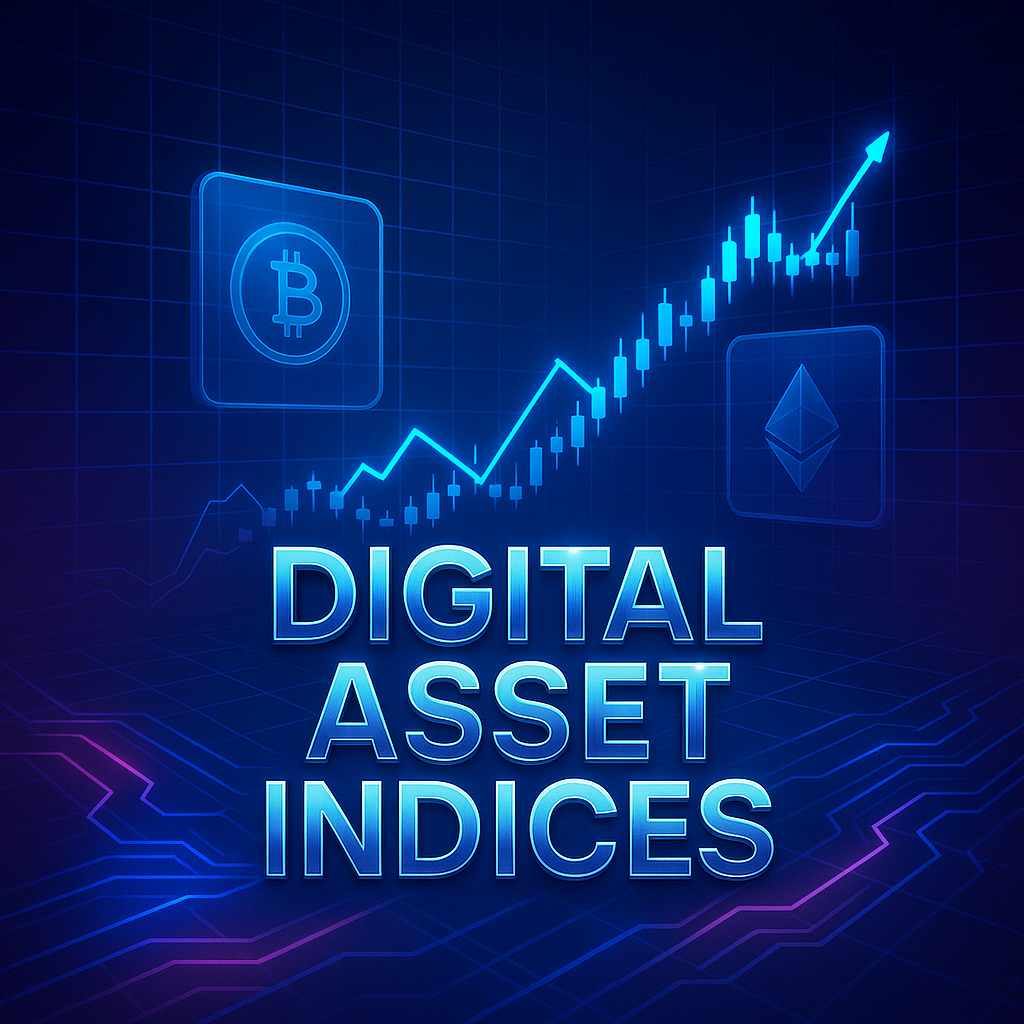Digital asset indices explained in depth—covering how these crypto benchmarks are constructed, why they matter for benchmarking and passive exposure, and what sets the major index families apart. Moreover, explore the design choices behind asset selection, weighting, pricing, and governance; see how investors and product issuers use these benchmarks for ETFs, derivatives, and risk management; and, finally, consider the benefits, limitations, and future trends shaping this fast-moving corner of finance.

1. What Exactly Is a Digital Asset Index?
First and foremost, a digital-asset index—or, put another way, digital asset indices explained—is a rules-based basket of cryptocurrencies or tokens whose prices combine into a single, continuously updated number, much like the S&P 500 for equities. Consequently, leading providers such as S&P Dow Jones, MSCI, Nasdaq, FTSE Russell and Bitwise publish transparent rulebooks covering asset selection, weighting and governance.
2. Why Bother With an Index at All?
- Diversification. A multi-asset basket dampens single-coin volatility.
- Benchmarking. Active funds need a neutral yard-stick.
- Accessibility. Index-linked ETFs/ETNs simplify custody and compliance.
- Transparency & Governance. Methodologies are public and audited.
In addition, when digital asset indices explained above are used as benchmarks, they give investors an instant snapshot of how an entire slice of the crypto market is performing.
3. How Are Digital Asset Indices Built?
| Design Choice | Typical Approach | Real-World Example |
|---|---|---|
| Universe selection | Liquidity and free-float screens | S&P Digital Asset Broad Market Index requires assets to be priced on ≥ 2 eligible exchanges. |
| Weighting | Free-float cap-weighted, capped, or equal weight | Nasdaq Crypto Index caps any asset at 40 %. |
| Pricing | Volume-weighted average across exchanges | Nasdaq publishes both real-time and once-daily settlement versions. |
| Rebalancing | Monthly or quarterly | MSCI Global Digital Assets Top 20 rebalances quarterly. |
| Governance | Independent committee, IOSCO-aligned | Standard across top providers. |
Furthermore, each of these design choices dictates how an index will behave in different market conditions.
4. A Quick Tour of the Major Benchmarks
- S&P Digital Asset Broad Market Index (DABMI)—launched 2021, parent for sector sub-indices.
- Nasdaq Crypto Index (NCI)—real-time benchmark licensed to ETP issuers.
- MSCI Global Digital Assets Series—rolled out February 2024, capped at 20 constituents.
- FTSE Russell Digital Asset Index Series—built with Grayscale for potential spot-crypto ETFs.
- Bitwise 10 Large-Cap Crypto Index—equal-weight, monthly rebalance (industry data sheet).
Similarly, each benchmark illustrates a different philosophy on breadth, liquidity and governance—thus giving investors multiple tools to compare.
5. How Investors Use Them
- Passive exposure via ETFs/ETNs; as a result, holders gain diversified beta.
- Performance attribution for active strategies; therefore, managers can isolate alpha.
- Derivatives & structured products (futures, options, swaps) that, consequently, expand hedging choices.
- Risk-management inputs for multi-asset allocation; in other words, CIOs can map crypto risk to broader portfolios.
6. Benefits & Limitations
| Benefits | Limitations |
|---|---|
| Diversifies single-coin risk | However, correlations spike in market stress |
| Transparent rulebook | Rapid asset turnover can raise costs |
| Simplifies institutional compliance | Nevertheless, regulatory patchwork may restrict certain tokens |
| Reduces operational burden | Depends on exchange pricing data |
7. The Road Ahead
Meanwhile, with spot-crypto ETFs live in the U.S. since January 2025 and Bitcoin above $100 000, digital asset indices explained here are evolving rapidly. Expect:
- Narrow-theme indices (DeFi-AI, tokenized RWAs).
- Hybrid indices blending tokenized real-world assets.
- ESG-aware screens for energy use and governance.
- Region-specific variants tuned to MiCA, FSCA and other rules.
Subsequently, these innovations will deepen market infrastructure and attract new capital.
8. Key Takeaways
- A digital-asset index is crypto’s answer to the S&P 500.
- Construction choices—universe, weighting, pricing, rebalance—define behaviour.
- Indices enable passive products, benchmarking and risk tools.
- Ultimately, investors still face volatility, data quality and evolving regulation.
In short, digital asset indices explained provide a roadmap for navigating the increasingly complex crypto market.